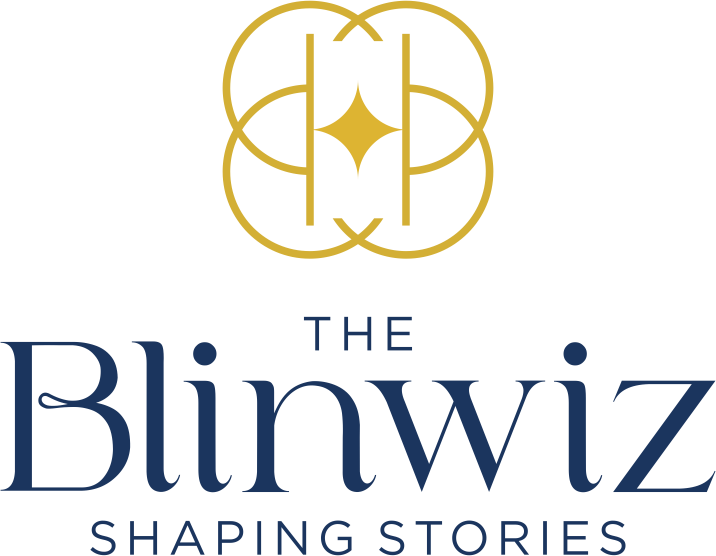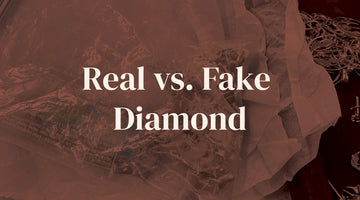Picture this: You're about to pop the big question, and you've found the perfect ring. The diamond gleams like something straight out of a fairy tale, but wait—how do you know if that dazzling stone is the real deal or just a wannabe? In a world where bling is king, the difference between a genuine diamond and a sneaky imposter could be the difference between a "yes!" and a "uh... let me think about it."
Fear not, my diamond detective! We’re diving into the ultimate showdown of real vs. fake diamonds, with a bit of humor and a lot of savvy tips to help you avoid the embarrassment of proposing with cubic zirconia.
Also Read: Platinum or Diamond: Which One Will Leave Your Wallet Weeping?
How to Identify a Diamond: The Basics
Before you start grilling your jeweler like you're in a high-stakes episode of CSI: Diamond Edition, let’s cover the basics of how to identify a real diamond.
- The Fog Test: You’ve probably heard that diamonds are forever, but did you know they’re also fog-proof? Hold the diamond close to your mouth and breathe on it like you’re trying to steam up a mirror. If the stone stays clear, it’s a good sign. If it fogs up like your bathroom mirror after a hot shower, it might be time to reconsider.
- The Water Test: Diamonds are dense, and I don’t mean that in an intellectual sense. Fill a glass with water and drop the stone in. A real diamond will sink like a rock, because, well, it is a rock. If it floats or hovers suspiciously in the middle, it’s probably trying to pull a fast one on you.
- The Newspaper Test: This one is for all you bookworms. Place the diamond flat side down on a piece of newspaper. If you can read the print through the stone, or even see black smudges, it’s likely a fake. Real diamonds refract light in such a way that they obscure text.
Real Diamond in Sunlight: Let the Sun Do the Talking
Nothing says "I’m legit" like passing the sunlight test. Take your diamond for a stroll in the sunlight and watch what happens.
- Brilliance: Real diamonds reflect light in a way that’s nothing short of magical. They produce a dazzling display of white light, known as brilliance. If your diamond sparkles like it’s throwing a disco party in the sunlight, you’re probably holding the real thing.
- Fire: No, I’m not talking about setting your stone on fire (please don’t do that). Fire refers to the rainbow-like flashes of color you see when light hits the diamond at different angles. A genuine diamond will show off its fire like it’s auditioning for the next big fantasy movie.
If your stone looks more like a sad, dull piece of glass in the sunlight, you might want to have a chat with your jeweler. Or at least use it as a paperweight.
Also Read: The Ultimate Guide to Types of Diamonds: More Than Just a Girl's Best Friend
How to Identify Real Diamond: The Advanced Edition
If you’ve got a stone that’s passed the beginner tests but still have doubts, it’s time to level up with some more advanced techniques.
- The UV Light Test: This one’s a bit like taking your diamond to a club to see if it can dance. Under UV light, many diamonds will show a blue fluorescence. Don’t worry if it doesn’t, though; not all diamonds fluoresce, and a lack of fluorescence doesn’t mean your diamond’s a dud. But if it glows in a funky color, it’s time to raise an eyebrow.
- The Loupe Test: Ever seen a jeweler squinting through a little magnifying glass? That’s a loupe, and it’s their best friend. A real diamond will have tiny imperfections, known as inclusions, that you can spot under a loupe. A flawless stone might seem perfect, but unless you’re buying a lab-grown diamond, too much perfection could be a red flag.
- Thermal Conductivity Test: Real diamonds are excellent conductors of heat. Jewelers often use a thermal conductivity tester to determine if a stone is genuine. If the diamond conducts heat and cools down quickly, it’s real. If not, well, it might just be a shiny imposter.
Certification: The Diamond's Passport
Alright, Sherlock, you’ve done the tests, and your diamond is looking like the real deal. But how do you seal the deal? Enter the certification—think of it as your diamond’s passport. It’s proof that your stone isn’t just a pretty face, but the real McCoy.
- GIA Certification: The Gemological Institute of America (GIA) is the gold standard in diamond certification. A GIA certificate tells you everything you need to know about your diamond’s 4 Cs—Carat, Cut, Color, and Clarity. It’s like getting a report card for your stone, and trust me, you want straight A’s.
- Other Certifications: While GIA is the most well-known, there are other reputable certifiers like the American Gem Society (AGS) and the International Gemological Institute (IGI). Each certifier has its own grading system, but the key is to make sure your diamond comes with a certificate from a recognized institution.
- Why Certification Matters: A certified diamond is like having a receipt for your purchase. It not only confirms the diamond’s authenticity but also provides detailed information about its quality. When you’re spending serious cash on a piece of bling, that peace of mind is priceless.
Without a certificate, you’re essentially buying a mystery stone. It could be the Hope Diamond, or it could be something you’d find in a gumball machine—do you really want to take that risk?
Also Read: Shining a Light on Lab-Grown Diamonds: What, How, and Are They Real?
When In Doubt, Ask a Professional
Let’s face it: while these tests are handy, nothing beats a professional’s opinion. If you’re serious about your diamond (and who wouldn’t be?), take it to a certified gemologist for an appraisal. They have the tools and the know-how to give you a definitive answer, and their stamp of approval can save you from making a costly mistake.
Real vs. Fake: Why It Matters
Now, you might be wondering, why all the fuss? After all, fake diamonds can be pretty convincing, and they come with a much friendlier price tag. But here’s the thing: a real diamond isn’t just a piece of carbon—it’s a symbol of lasting love, commitment, and that epic tale you’ll tell your grandkids one day.
Imagine this: You’re at a party, and someone compliments your ring. Do you really want to follow up with, "Thanks, it’s fake"? The truth is, while fakes can be fun and fashionable, nothing compares to the genuine article when it comes to making a statement.
Final Thoughts: Shine Bright Like a Diamond
At the end of the day, whether you’re shopping for an engagement ring, a special gift, or just treating yourself, knowing the difference between a real and fake diamond is crucial. Not only does it protect your investment, but it also ensures that you’re carrying a piece of something truly special.
So next time you’re faced with the question of "real vs. fake diamond," remember these tips, keep your sense of humor, and trust your instincts. And most importantly, always ask for that certification. After all, diamonds might be forever, but so is the story you’ll tell about how you found the perfect one.

